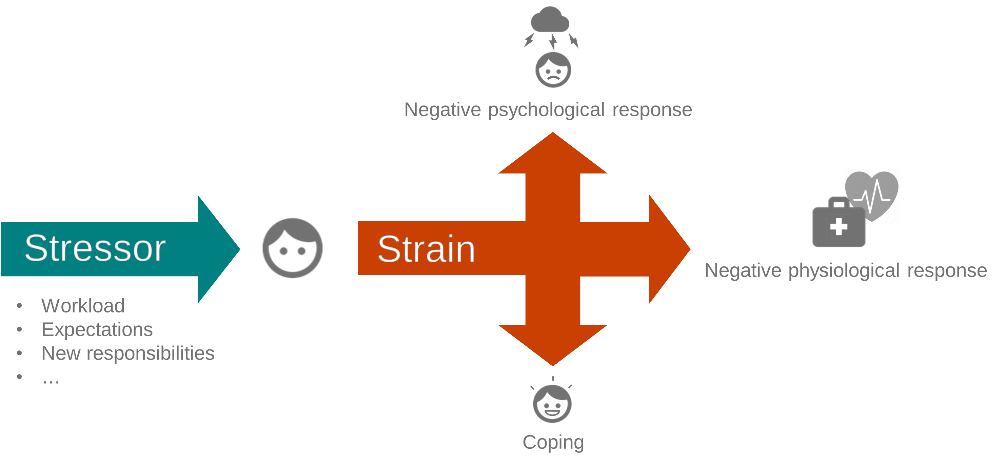Stress is the adverse reaction people have to excessive pressures or other types of demand placed on them. There is a clear distinction between pressure, which can create a ‘buzz’ and be motivating, and stress, which occurs when this pressure becomes excessive. We all experience pressure on a daily basis, and need it to motivate us and enable us to perform at our best. It’s when we experience too much pressure without the opportunity to recover that we start to experience stress.
We can all feel stressed at times when we feel as though everything becomes too much, when things get on top of us, or when we feel as though we are unable to cope. It affects us in different ways at different times and is often the result of a combination of factors in our personal and working lives. Work-related stress can be tackled by working with your employer to identify issues at source and agreeing realistic and workable ways to tackle these.
Mechanism of stress
A good way for managers to manage and tackle stress experienced by a team or an employee, is to identify the root cause of the stress, and for this, it is important to understand the mechanism of stress. The figure below represents an integrated model of stress to fully understand the mechanism in place.
Basic model of stress

In this model, a person is considered as a system and the stressors are the inputs to the system. Stressors can be typically an excessive workload, undue responsibilities, excessive expectations, etc. When a stressor occurs, a person will feel stressed and will respond to stress with a strain. While stress is the feeling perceived by the person, the strain is the tangible result of this feeling. The strain can be either a psychological response, where the person is consumed by negative thoughts, or a physiological response, where the person is suffering from a debilitating illness (e.g. increased blood pressure). However, there is the third and preferred outcome, where the person is coping with the stressor input and resulted strain. But, for a person to cope with stress, we need to look at different moderators where managers can have an active part to transform a stressed situation into a coping situation:
- personal relationships
Building close relationships have the power to moderate the connection between the stressor and the strain. This moderator works particularly well when the nature of the stressor is excessive workload. And, in reverse, a feeling of isolation might exacerbate the strain.
- Planned change
A stressor is usually a new occurrence, therefore a change, to a balanced system. When a change is introduced, if it is properly prepared, the person will more likely respond well to it and therefore, this will moderate the strain.
- Management support
Feeling supported by management representatives can have a strong and positive effect on stress. When a person raises a strong feeling of stress it is important for managers to provide high-quality management support, for instance sitting with the person day-by-day, as it can greatly alleviate stress and improve coping of the situation.
- Appropriate resources
When a person is required to undertake a task where the demand exceeds the resources available to properly perform, it is likely to aggravate the strain. One way to mitigate the stress is to ensure that the persons in the company have the right training and have access to the right resources to perform the task being asked.
- Clearly defined scope of work
A lack of clarity in a new role or task can greatly affect the stress put on a person.
Additionally, we advise managers to familiarise themselves with HSE Management Standards and guidelines on work-related stress for employers and employees and their representatives (available here or at www.hse.gov.uk/stress). This leaflet, produced by HSE and the International Stress Management AssociationUK, and backed by Acas, CIPD and the TUC, explains what these are, and what you can do to help your employer to help you.
